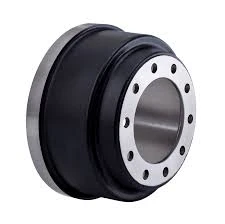
-
 Afrikaans
Afrikaans -
 Albanian
Albanian -
 Amharic
Amharic -
 Arabic
Arabic -
 Armenian
Armenian -
 Azerbaijani
Azerbaijani -
 Basque
Basque -
 Belarusian
Belarusian -
 Bengali
Bengali -
 Bosnian
Bosnian -
 Bulgarian
Bulgarian -
 Catalan
Catalan -
 Cebuano
Cebuano -
 Corsican
Corsican -
 Croatian
Croatian -
 Czech
Czech -
 Danish
Danish -
 Dutch
Dutch -
 Инглиз
Инглиз -
 Esperanto
Esperanto -
 Estonian
Estonian -
 Finnish
Finnish -
 French
French -
 Frisian
Frisian -
 Galician
Galician -
 Georgian
Georgian -
 German
German -
 Greek
Greek -
 Gujarati
Gujarati -
 Haitian Creole
Haitian Creole -
 hausa
hausa -
 hawaiian
hawaiian -
 Hebrew
Hebrew -
 Hindi
Hindi -
 Miao
Miao -
 Hungarian
Hungarian -
 Icelandic
Icelandic -
 igbo
igbo -
 Indonesian
Indonesian -
 irish
irish -
 Italian
Italian -
 Japanese
Japanese -
 Javanese
Javanese -
 Kannada
Kannada -
 kazakh
kazakh -
 Khmer
Khmer -
 Rwandese
Rwandese -
 Korean
Korean -
 Kurdish
Kurdish -
 Kyrgyz
Kyrgyz -
 Lao
Lao -
 Latin
Latin -
 Latvian
Latvian -
 Lithuanian
Lithuanian -
 Luxembourgish
Luxembourgish -
 Macedonian
Macedonian -
 Malgashi
Malgashi -
 Malay
Malay -
 Malayalam
Malayalam -
 Maltese
Maltese -
 Maori
Maori -
 Marathi
Marathi -
 Mongolian
Mongolian -
 Myanmar
Myanmar -
 Nepali
Nepali -
 Norwegian
Norwegian -
 Norwegian
Norwegian -
 Occitan
Occitan -
 Pashto
Pashto -
 Persian
Persian -
 Polish
Polish -
 Portuguese
Portuguese -
 Punjabi
Punjabi -
 Romanian
Romanian -
 Russian
Russian -
 Samoan
Samoan -
 Scottish Gaelic
Scottish Gaelic -
 Serbian
Serbian -
 Sesotho
Sesotho -
 Shona
Shona -
 Sindhi
Sindhi -
 Sinhala
Sinhala -
 Slovak
Slovak -
 Slovenian
Slovenian -
 Somali
Somali -
 Spanish
Spanish -
 Sundanese
Sundanese -
 Swahili
Swahili -
 Swedish
Swedish -
 Tagalog
Tagalog -
 Tajik
Tajik -
 Tamil
Tamil -
 Tatar
Tatar -
 Telugu
Telugu -
 Thai
Thai -
 Turkish
Turkish -
 Turkmen
Turkmen -
 Ukrainian
Ukrainian -
 Urdu
Urdu -
 Uighur
Uighur -
 Uzbek
Uzbek -
 Vietnamese
Vietnamese -
 Welsh
Welsh -
 Bantu
Bantu -
 Yiddish
Yiddish -
 Yoruba
Yoruba -
 Zulu
Zulu
disk brake vs drum brake
Disk Brake vs. Drum Brake Understanding the Differences
When it comes to vehicle braking systems, two main types reign supreme disk brakes and drum brakes. Each system has its own set of advantages and disadvantages, making them suitable for different applications. Understanding the differences between them can help car owners make informed decisions regarding maintenance, performance, and safety.
1. Basic Design and Operation
Disk brakes consist of a flat, circular disc that is mounted on the wheel. When the driver presses the brake pedal, hydraulic fluid forces brake pads against the disc, creating friction that slows down or stops the vehicle. This system allows for better heat dissipation, reducing the risk of brake fade during heavy use.
On the other hand, drum brakes work with a cylindrical drum attached to the wheel. Inside the drum, brake shoes expand outward against the drum's inner surface when the brake pedal is pressed. While drum brakes are effective, they tend to trap heat, which can lead to fade during repeated braking applications.
Disk Brake vs
. Drum Brake Understanding the DifferencesIn terms of performance, disk brakes generally outperform drum brakes. They provide superior stopping power and are more responsive, particularly under high-speed conditions. Their design allows for quicker cooling, which is crucial during downhill driving or in stop-and-go traffic.
disk brake vs drum brake

Drum brakes, while effective for low-speed applications, are often found in older vehicles or on rear wheels where there is less demand for high-performance braking. They are usually cheaper to manufacture and install, which can be appealing to budget-conscious consumers.
3. Maintenance and Longevity
When it comes to maintenance, disk brakes are relatively straightforward. They often require less frequent replacement of parts, and issues like warped rotors can be easily rectified. However, brake pads will wear out faster due to the greater friction involved.
In contrast, drum brakes can be more complex to service because their components are enclosed within the drum, making access challenging. Moreover, the brake shoes in drum brakes can wear unevenly, leading to additional maintenance concerns. However, they typically last longer than disk brake pads when used properly.
4. Conclusion
In conclusion, both disk and drum brakes have their place in the automotive world. Disk brakes offer superior performance, heat dissipation, and ease of maintenance, making them the preferred choice for modern vehicles, especially those designed for high speeds or heavy loads. Meanwhile, drum brakes still serve a purpose, particularly in cost-effective or smaller vehicles. Ultimately, understanding these differences can aid consumers in making informed choices about their braking systems, ensuring safety and reliability on the road.
-
What Are Drum BrakesЯңалыкларJul.07,2025
-
Understanding Brake Drum MaterialЯңалыкларJul.07,2025
-
Semi-Trailer Brake Drum: A Key Component for Extreme Loads and Long-Distance TransportЯңалыкларJul.07,2025
-
Drum Brake Pads for SaleЯңалыкларJul.07,2025
-
Brake Drums for SaleЯңалыкларJul.07,2025
-
Brake Drum ManufacturerЯңалыкларJul.07,2025
-
Aluminum Brake Drums: The Future of High-Performance CarsЯңалыкларJul.07,2025
